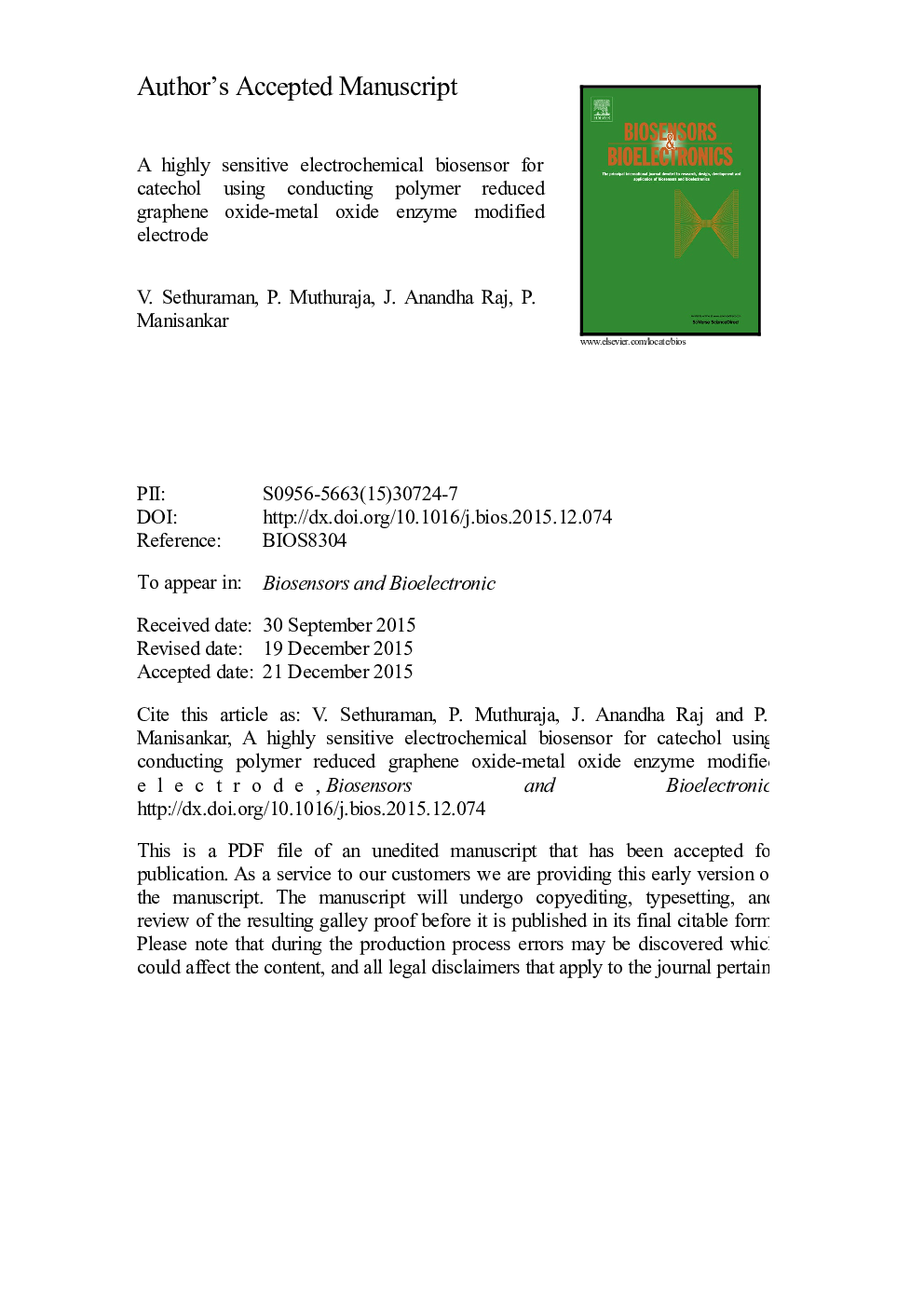| کد مقاله | کد نشریه | سال انتشار | مقاله انگلیسی | نسخه تمام متن |
|---|---|---|---|---|
| 7230418 | 1470947 | 2016 | 23 صفحه PDF | دانلود رایگان |
عنوان انگلیسی مقاله ISI
A highly sensitive electrochemical biosensor for catechol using conducting polymer reduced graphene oxide-metal oxide enzyme modified electrode
ترجمه فارسی عنوان
یک باسن سنج الکتروشیمیایی بسیار حساس برای کاتچول با استفاده از پلیمرهای هدایت شده، الکترودهای اصلاح شده آنزیم اکسید فلزی گرافین را کاهش داد
دانلود مقاله + سفارش ترجمه
دانلود مقاله ISI انگلیسی
رایگان برای ایرانیان
کلمات کلیدی
کاتچول، تیروزیناز، هیدروترمال الکتروشیمیایی، بیوسنسور،
موضوعات مرتبط
مهندسی و علوم پایه
شیمی
شیمی آنالیزی یا شیمی تجزیه
چکیده انگلیسی
The fabrication, characterization and analytical performances were investigated for a catechol biosensor, based on the PEDOT-rGO-Fe2O3-PPO composite modified glassy carbon (GC) electrode. The graphene oxide (GO) doped conducting polymer poly (3,4-ethylenedioxythiophene) (PEDOT) was prepared through electrochemical polymerization by potential cycling. Reduction of PEDOT-GO was carried out by amperometric method. Fe2O3 nanoparticles were synthesized in ethanol by hydrothermal method. The mixture of Fe2O3, PPO and glutaraldehyde was casted on the PEDOT-rGO electrode. The surface morphology of the modified electrodes was studied by FE-SEM and AFM. Cyclic voltammetric studies of catechol on the enzyme modified electrode revealed higher reduction peak current. Determination of catechol was carried out successfully by Differential Pulse Voltammetry (DPV) technique. The fabricated biosensor investigated shows a maximum current response at pH 6.5. The catechol biosensor exhibited wide sensing linear range from 4Ã10â8 to 6.20Ã10â5 M, lower detection limit of 7Ã10â9 M, current maxima (Imax) of 92.55 µA and Michaelis-Menten (Km) constant of 30.48 µM. The activation energy (Ea) of enzyme electrode is 35.93 KJ molâ1 at 50 °C. There is no interference from d-glucose and l-glutamic acid, ascorbic acid and o-nitrophenol. The PEDOT-rGO-Fe2O3-PPO biosensor was stable for at least 75 days when stored in a buffer at about 4 °C.
ناشر
Database: Elsevier - ScienceDirect (ساینس دایرکت)
Journal: Biosensors and Bioelectronics - Volume 84, 15 October 2016, Pages 112-119
Journal: Biosensors and Bioelectronics - Volume 84, 15 October 2016, Pages 112-119
نویسندگان
V. Sethuraman, P. Muthuraja, J. Anandha Raj, P. Manisankar,
